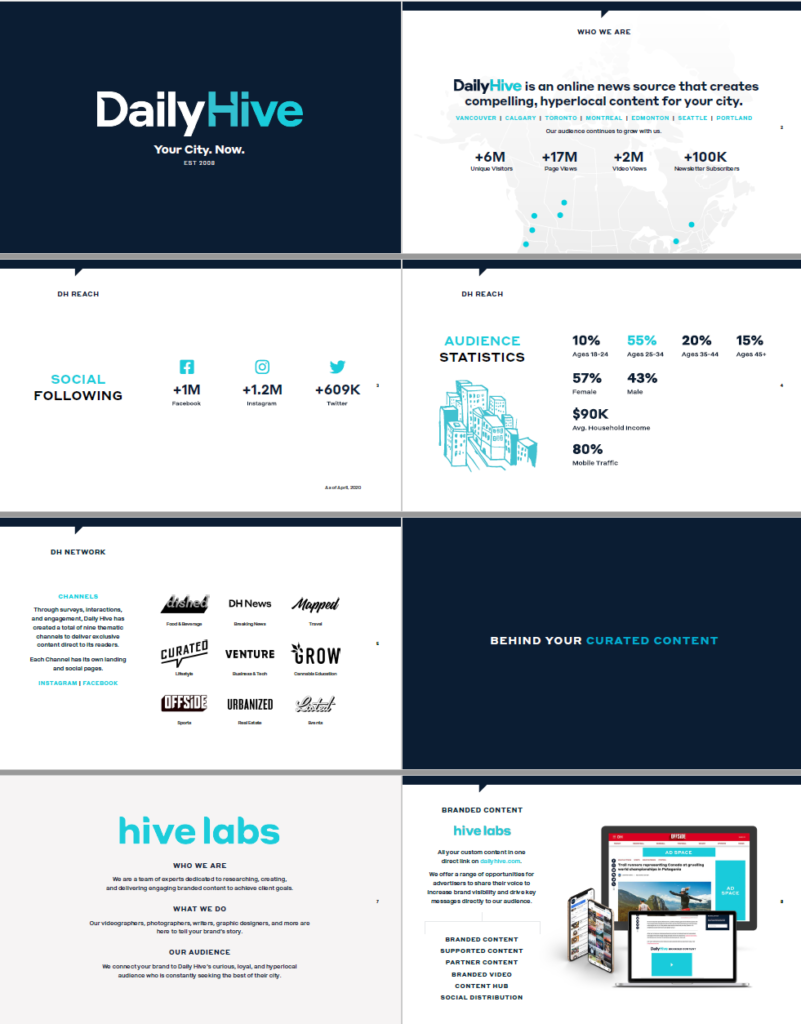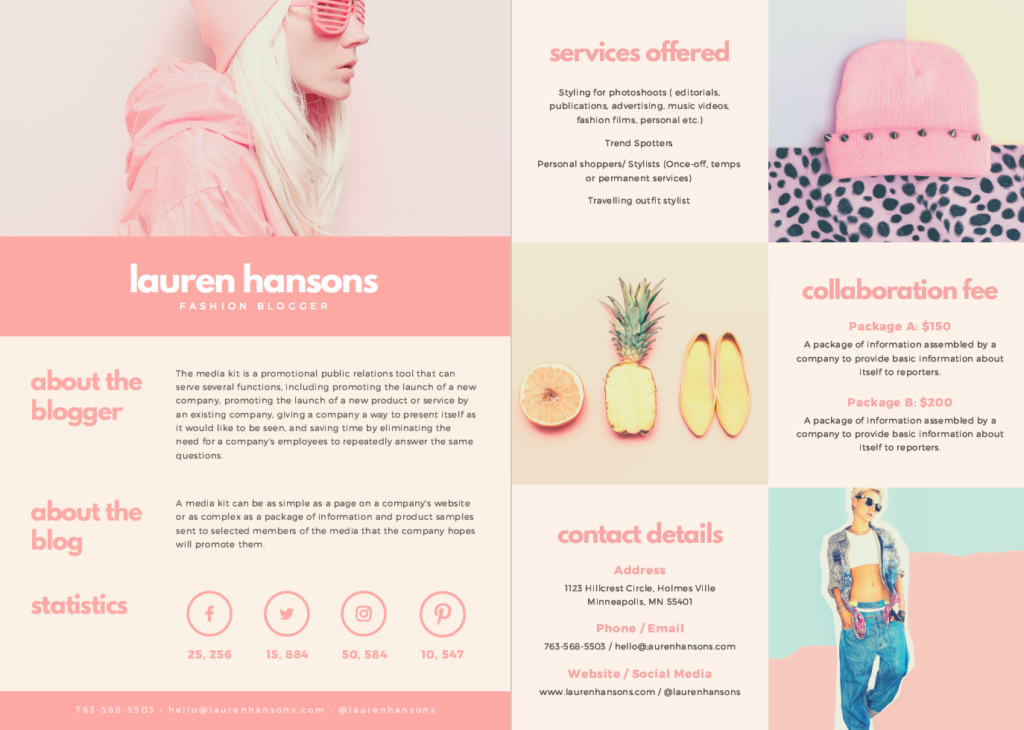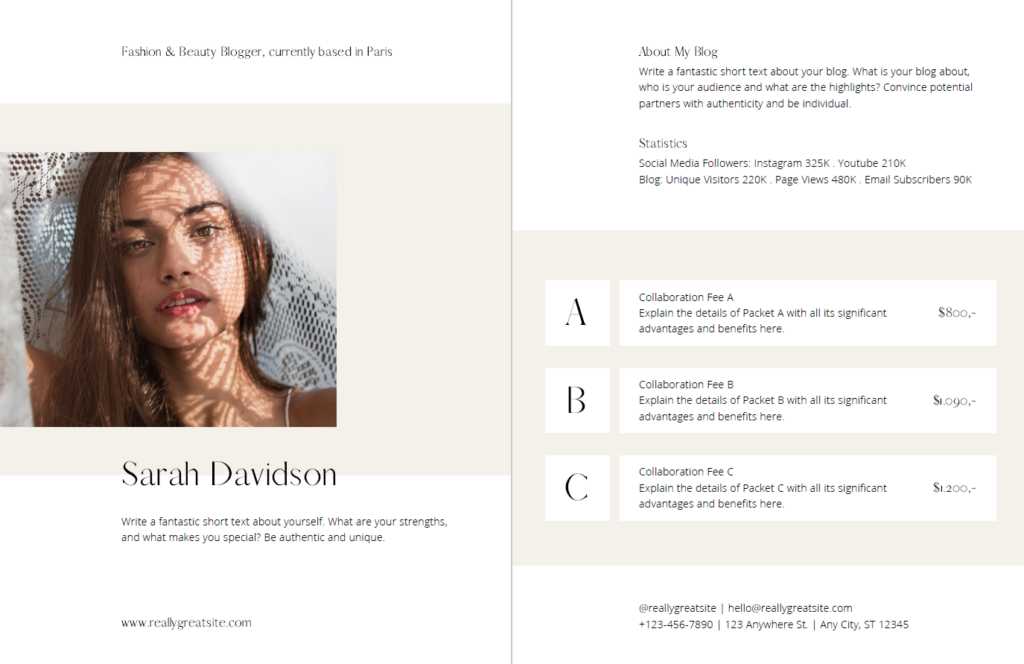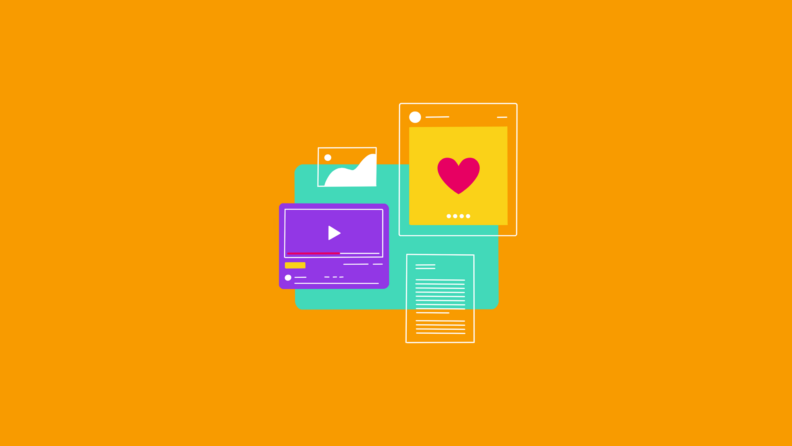In this post we're going to tell you all you need to know about media kits. If you're wondering what a media kit is, what goes in it, or are confused about the difference with a press kit, we're going to help set you straight.
In this quick guide to media kits, you'll learn:
- What is a media kit?
- What's the difference between a press kit and media kit?
- Types of media kits for publishers, bloggers and influencers
- What makes a good media kit?
- How to make a media kit
You're probably doing all this research because you want to create your own media kit, so be sure to check out our post on how to create a media kit too - it's full of media kit examples, and a free downloadable media kit template.
What is a media kit?
A media kit is a showcase of your brand and catalogue of the media space or inventory you've got available for sale to advertisers.

The media space you can sell is typically your owned media - that could be on your webpages, your social channels, email subscribers, followers or audience.
A media kit typically includes descriptions about your company, your reach, the media space, and usually includes pricing although sometimes rates are provided in a separate rate card.
It's a bit like a shop window - it's there to show people passing by what you have to offer, and to tempt them in to come in to buy something. In our case, that something is our inventory, or media space.
A media kit can be as simple as a Word document, but is more persuasive when it's high quality, and designed thoughtfully and persuasively. You can design a media kit in a design program like Adobe Illustrator, Adobe Photoshop, Canva or Google Slides and then share it with potential buyers as a pdf.
What's the difference between a press kit, and a media kit?
In short, a press kit helps you get press coverage, a media kit helps you directly generate revenue through advertising sales.
A press kit is something you pull together to try and get reporters and journalists to write stories or features about you and your business - and make it easy for them to write their story. The press kit should be a one-stop shop for all of the information journalists need to decide to write about you. It can include head shots, press releases and contact information for media contacts.
So a press kit is very different from a media kit. If this is what you're trying to create, not a media kit, check out The College Investor, they've got a great example of a press kit in their media center.
Types of media kit for publishers, bloggers and influencers
Whether you're creating a media kit as a publisher, blogger or influencer, there are typically three elements you should include:
- Who you are
- Audience and reach statistics
- Your media space on offer
- Pricing or rate card
We're going to share a few examples of different types of media kits but be sure to check out our list of the best media kit examples too.
Publisher media kit
Below is an example media kit from The Daily Hive, a hyperlocal news website. You'll see it shows statistics on reach and readership, as well as details on their media space.

Blogger media kit
This is an example media kit from for a blogger. Similarly to the publisher media kit, it shows statistics on reach and readership, as well as services on offer and collaboration opportunities.

Influencer media kit
The influencer media kit is perhaps the most simple. There's an increased focus on the influencer, their rate card and three collaboration opportunities on offer. You'll see it shows statistics on reach and readership too.

What makes a good media kit?
If you're making a media kit, it's worth considering what you can do to reduce the friction of the sales process and make it easier to make a sale. Here are a few things to consider:
- You provide clarity on what you offer - You want to make it easy for advertisers to pick what they want from your inventory. So be really clear about what you're offering, the price, and the value it can provide in terms of reach, impressions, clicks, and conversions to advertisers.
- You have a range of options - Different advertisers will be looking for different things; some will be looking for brand advertising, others for direct response advertising. It's important to have a range of options that address different parts of the buyer's journey, as well as at different price points.
- You know the value you can provide - Knowing your click-thru rates, and typical conversion rates means you can provide advertisers with a projected ROI for their campaign.
- You can communicate your value - It's important to know (and share) your Google Analytics data and other statistics so advertisers trust you. They need to know they'll get a return on their investment. It's important to be truthful with the data so that you secure a long-term relationship, not just a one-off deal.
- Your media kit looks good - You need to look like the real deal. It's worth investing the time to make a high-quality media kit, with a well-designed layout that clearly showcases your site and the value you can offer potential buyers. If you're asking for $$$'s then your media kit design needs to reflect that.
- You leave the advertiser wanting more - The goal of the media kit isn't to overwhelm the advertiser with information, but to give them enough information that they think a follow-up conversation is worthwhile. So be brief, be bright, and be gone.
- You provide a clear and easy next step - You need to make sure advertisers know how they can actually buy the media space and inventory you're selling. So help them understand the booking process and make it easy for them to take the next step to buy what you're selling.
How to make a media kit
Now you know you need a media kit, and what should be in it, you're next step is to create your own media kit. We've made a tutorial on how to make a media kit which explains:
- How to develop your advertising inventory
- Best media kit examples to copy (and download)
- How to use a media kit
- Media kit template (free download)
Download our free media kit template
Snag instant access to our easy-to-use media kit template with PowerPoint and Google Slides for you to adapt and reuse.
What do you think?
Got any tips or tricks to share? Have you got a media kit? Share it it in the comments below! Tell us what creative inventory you've come up with and what's working for you in selling to brands and marketers.


